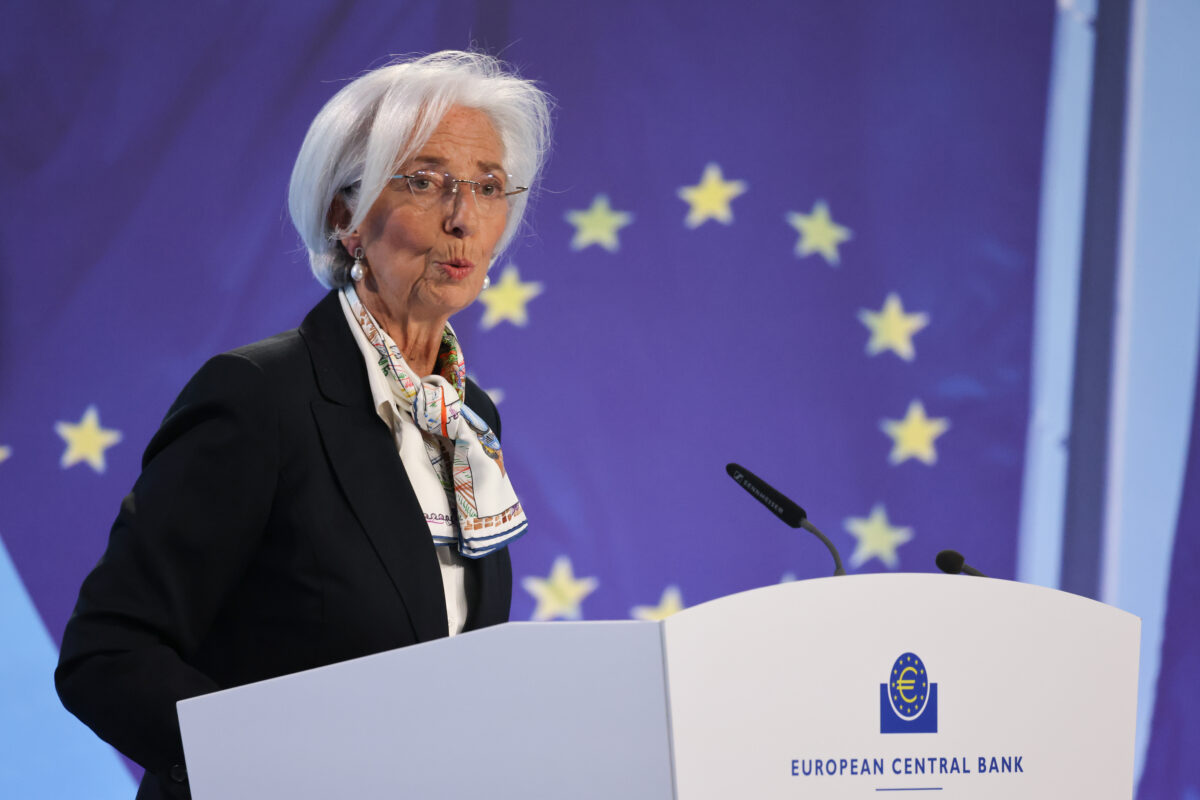Jerome Powell spricht heute vor dem gemeinsamen Wirtschaftsausschuß des US-Senats und des US-Abgeordnetenhauses. Hier der soeben veröffentlichte Text seines Statements:
Chairwoman Waters, Ranking Member McHenry, and other members of the Committee, I am pleased to present the Federal Reserve’s semiannual Monetary Policy Report.
My colleagues and I strongly support the goals of maximum employment and price stability that Congress has set for monetary policy. Congress has given us an important degree of independence to pursue these goals based solely on data and objective analysis. This independence brings with it an obligation to explain clearly how we pursue our goals. Today I will review the current economic situation before turning to monetary policy.
Current Economic Situation
The economic expansion is well into its 11th year, and it is the longest on record. Over the second half of last year, economic activity increased at a moderate pace and the labor market strengthened further, as the economy appeared resilient to the global headwinds that had intensified last summer. Inflation has been low and stable but has continued to run below the Federal Open Market Committee’s (FOMC) symmetric 2 percent objective.
Job gains averaged 200,000 per month in the second half of last year, and an additional 225,000 jobs were added in January. The pace of job gains has remained above what is needed to provide jobs for new workers entering the labor force, allowing the unemployment rate to move down further over the course of last year. The unemployment rate was 3.6 percent last month and has been near half-century lows for more than a year. Job openings remain plentiful. Employers are increasingly willing to hire workers with fewer skills and train them. As a result, the benefits of a strong labor market have become more widely shared. People who live and work in low- and middle-income communities are finding new opportunities. Employment gains have been broad based across all racial and ethnic groups and levels of education. Wages have been rising, particularly for lower-paying jobs.
Gross domestic product rose at a moderate rate over the second half of last year. Growth in consumer spending moderated toward the end of the year following earlier strong increases, but the fundamentals supporting household spending remain solid. Residential investment turned up in the second half, but business investment and exports were weak, largely reflecting sluggish growth abroad and trade developments. Those same factors weighed on activity at the nation’s factories, whose output declined over the first half of 2019 and has been little changed, on net, since then. The February Monetary Policy Report discusses the recent weakness in manufacturing. Some of the uncertainties around trade have diminished recently, but risks to the outlook remain. In particular, we are closely monitoring the emergence of the coronavirus, which could lead to disruptions in China that spill over to the rest of the global economy.
Inflation ran below the FOMC’s symmetric 2 percent objective throughout 2019. Over the 12 months through December, overall inflation based on the price index for personal consumption expenditures was 1.6 percent. Core inflation, which excludes volatile food and energy prices, was also 1.6 percent. Over the next few months, we expect inflation to move closer to 2 percent, as unusually low readings from early 2019 drop out of the 12-month calculation.
The nation faces important longer-run challenges. Labor force participation by individuals in their prime working years is at its highest rate in more than a decade. However, it remains lower than in most other advanced economies, and there are troubling labor market disparities across racial and ethnic groups and across regions of the country. In addition, although it is encouraging that productivity growth, the main engine for raising wages and living standards over the longer term, has moved up recently, productivity gains have been subpar throughout this economic expansion. Finding ways to boost labor force participation and productivity growth would benefit Americans and should remain a national priority.
Monetary Policy
I will now turn to monetary policy. Over the second half of 2019, the FOMC shifted to a more accommodative stance of monetary policy to cushion the economy from weaker global growth and trade developments and to promote a faster return of inflation to our symmetric 2 percent objective. We lowered the federal funds target range at our July, September, and October meetings, bringing the current target range to 1-1/2 to 1-3/4 percent. At our subsequent meetings, with some uncertainties surrounding trade having diminished and amid some signs that global growth may be stabilizing, the Committee left the policy rate unchanged. The FOMC believes that the current stance of monetary policy will support continued economic growth, a strong labor market, and inflation returning to the Committee’s symmetric 2 percent objective. As long as incoming information about the economy remains broadly consistent with this outlook, the current stance of monetary policy will likely remain appropriate. Of course, policy is not on a preset course. If developments emerge that cause a material reassessment of our outlook, we would respond accordingly.
Taking a longer view, there has been a decline over the past quarter-century in the level of interest rates consistent with stable prices and the economy operating at its full potential. This low interest rate environment may limit the ability of central banks to reduce policy interest rates enough to support the economy during a downturn. With this concern in mind, we have been conducting a review of our monetary policy strategy, tools, and communication practices. Public engagement is at the heart of this effort. Through our Fed Listens events, we have been hearing from representatives of consumer, labor, business, community, and other groups. The February Monetary Policy Report shares some of what we have learned. The insights we have gained from these events have informed our framework discussions, as reported in the minutes of our meetings. We will share our conclusions when we finish the review, likely around the middle of the year.
The current low interest rate environment also means that it would be important for fiscal policy to help support the economy if it weakens. Putting the federal budget on a sustainable path when the economy is strong would help ensure that policymakers have the space to use fiscal policy to assist in stabilizing the economy during a downturn. A more sustainable federal budget could also support the economy’s growth over the long term.
Finally, I will briefly review our planned technical operations to implement monetary policy. The February Monetary Policy Report provides details of our operations to date. Last October, the FOMC announced a plan to purchase Treasury bills and conduct repo operations. These actions have been successful in providing an ample supply of reserves to the banking system and effective control of the federal funds rate. As our bill purchases continue to build reserves toward levels that maintain ample conditions, we intend to gradually transition away from the active use of repo operations. Also, as reserves reach durably ample levels, we intend to slow our purchases to a pace that will allow our balance sheet to grow in line with trend demand for our liabilities. All of these technical measures support the efficient and effective implementation of monetary policy. They are not intended to represent a change in the stance of monetary policy. As always, we stand ready to adjust the details of our technical operations as conditions warrant.
Thank you. I am happy to take your questions.
Kommentare lesen und schreiben, hier klicken













…ich empfinde den Redetext von Powell eigentlich nicht allzu bullish…es klingt eigentlich eindeutig heraus, dass die FED die Zinsen ungern weiter senken möchte und auch aus den Repotransaktionen raus möchte…
„Längerfristig betrachtet ist das Zinsniveau im letzten Vierteljahrhundert gesunken, was mit stabilen Preisen und einer Wirtschaft, die ihr volles Potenzial ausschöpft, vereinbar ist. Dieses Niedrigzinsumfeld könnte die Fähigkeit der Zentralbanken einschränken, die Leitzinsen so weit zu senken, dass sie die Wirtschaft während eines Abschwungs unterstützen können. Mit dieser Sorge im Hinterkopf haben wir unsere geldpolitische Strategie, unsere Instrumente und unsere Kommunikationspraktiken überprüft. Das öffentliche Engagement steht im Mittelpunkt dieser Bemühungen. Im Rahmen unserer „Fed Listens“-Veranstaltungen haben wir von Vertretern der Verbraucher, der Arbeitswelt, der Wirtschaft, der Gemeinde und anderer Gruppen gehört. Der geldpolitische Bericht vom Februar gibt einige unserer Erkenntnisse wieder. Die Erkenntnisse, die wir aus diesen Veranstaltungen gewonnen haben, sind in unsere Rahmendiskussionen eingeflossen, über die in den Protokollen unserer Sitzungen berichtet wird. Wir werden unsere Schlussfolgerungen mitteilen, wenn wir die Überprüfung voraussichtlich Mitte des Jahres abgeschlossen haben.
Das derzeitige Niedrigzinsumfeld bedeutet auch, dass es wichtig wäre, dass die Finanzpolitik zur Unterstützung der Wirtschaft beiträgt, wenn diese sich abschwächt. Den Bundeshaushalt auf einen nachhaltigen Pfad zu bringen, wenn die Wirtschaft stark ist, würde dazu beitragen, dass die politischen Entscheidungsträger den Spielraum haben, die Finanzpolitik zur Stabilisierung der Wirtschaft in einer Abschwungphase zu nutzen. Ein nachhaltigerer Bundeshaushalt könnte auch das Wachstum der Wirtschaft langfristig unterstützen.
Abschließend werde ich kurz auf unsere geplanten technischen Operationen zur Umsetzung der Geldpolitik eingehen. Der geldpolitische Bericht vom Februar enthält Einzelheiten zu unseren bisherigen Operationen. Im Oktober letzten Jahres kündigte das FOMC einen Plan zum Ankauf von Schatzwechseln und zur Durchführung von Repo-Geschäften an. Diese Maßnahmen haben sich als erfolgreich erwiesen, da sie dem Bankensystem eine reichliche Versorgung mit Reserven und eine wirksame Kontrolle des Bundesfinanzierungssatzes ermöglichten. Da unsere Wechselkäufe weiterhin Reserven auf einem Niveau aufbauen, das eine ausreichende Versorgung mit Reserven gewährleistet, beabsichtigen wir, schrittweise von der aktiven Nutzung von Repo-Geschäften abzugehen. Da die Reserven dauerhaft ein ausreichendes Niveau erreichen, beabsichtigen wir auch, unsere Käufe auf ein Tempo zu verlangsamen, das es uns ermöglicht, unsere Bilanz entsprechend der Trendnachfrage nach unseren Verbindlichkeiten wachsen zu lassen.“